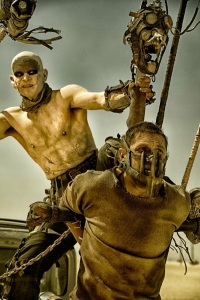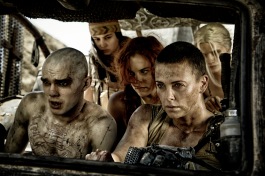 Amy is a special example of the art of making yourself scarce; something that director Asif Kapadia is exceptionally good at. He makes a few delicate choices about how to present a story, spends the right amount of patience interviewing the right people, and then simply presents his findings in a smartly edited collage of memory and sentiment.
Amy is a special example of the art of making yourself scarce; something that director Asif Kapadia is exceptionally good at. He makes a few delicate choices about how to present a story, spends the right amount of patience interviewing the right people, and then simply presents his findings in a smartly edited collage of memory and sentiment.
Amy is a picture of the life of throwback jazz chanteuse Amy Winehouse. It is constructed entirely from archive footage, giving it a very naturally progressing arch which begins with pre-fame home video footage, moves to the TV interviews and concert footage of 2003-2007 and finally ends in the news reports and paparazzi blitz that defined Winehouse’s final years.
The images are anchored by the voices of Winehouse’s family, friends and colleagues, all of whom delivering the honesty and insight that only comes with a microphone and the hours of patience that Kapadia clearly invested in the project. These interviews – and the editing of them – are the gem at the centre of the film. Full of people trying to forgive themselves, they drip with desperation and helplessness.
Gratefully, the film neglects to tell us how great Winehouse’s voice was, instead choosing to show it through studio footage and unheard versions of overplayed hits. Lyrics scrawl themselves across the screen as the songs underscore recollections of the events about which they were written. Kapadia’s prime interest is the words of Winehouse’s songs and he revels in the fact that they are autobiographical enough to use as a contributing narrator of the documentary from beyond the grave.
 The skill of the film is founded in pure juxtaposition. Almost every image on screen has been broadcast on television before but place one thing next to another and haze it in an interview with an old friend together with a well-placed lyric and it starts breathing sad truths. As with all documentaries, the brain recalculates what it feels to be accurate by cross-referencing what this person said with that person and how that adds or subtracts to what is seen.
The skill of the film is founded in pure juxtaposition. Almost every image on screen has been broadcast on television before but place one thing next to another and haze it in an interview with an old friend together with a well-placed lyric and it starts breathing sad truths. As with all documentaries, the brain recalculates what it feels to be accurate by cross-referencing what this person said with that person and how that adds or subtracts to what is seen.
Beyond the veracity of the mish-mash of accounts, what the film evokes is a simple grief at a life lived and lost under the super-surveillance of our age’s voracious media frenzy. That it does this without resorting to any kind of sugarcoating just makes it all the more vibrant.










